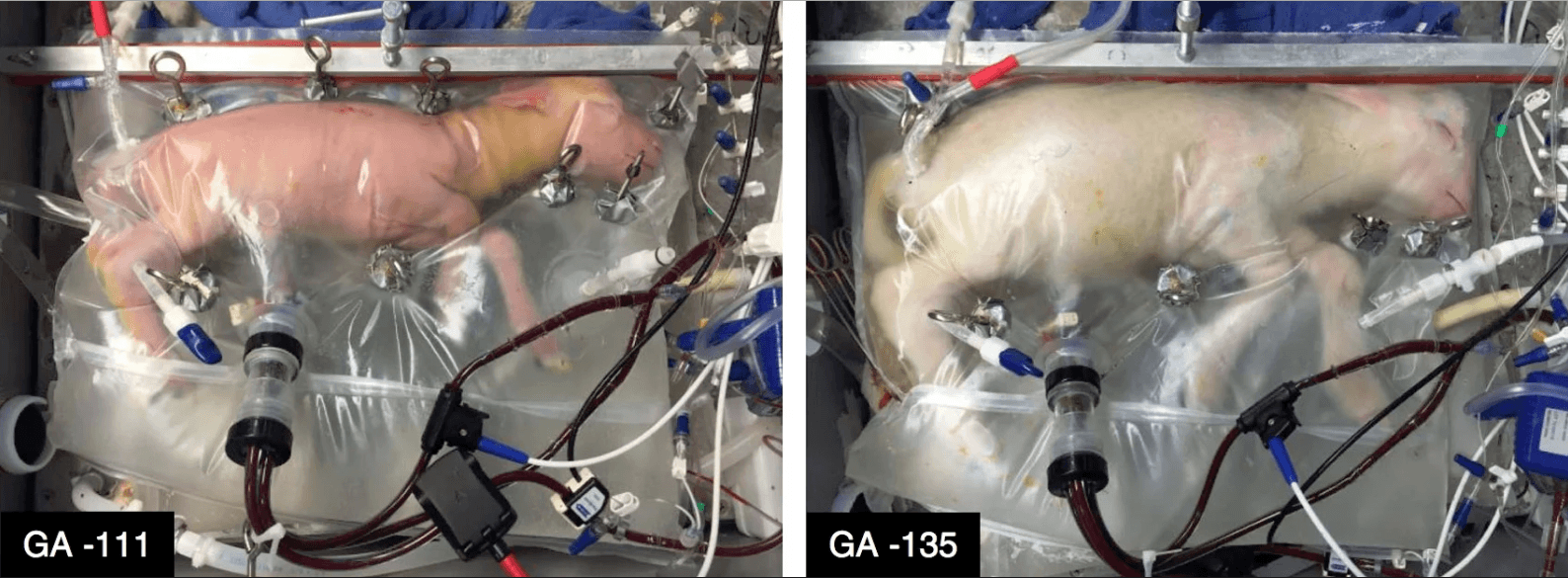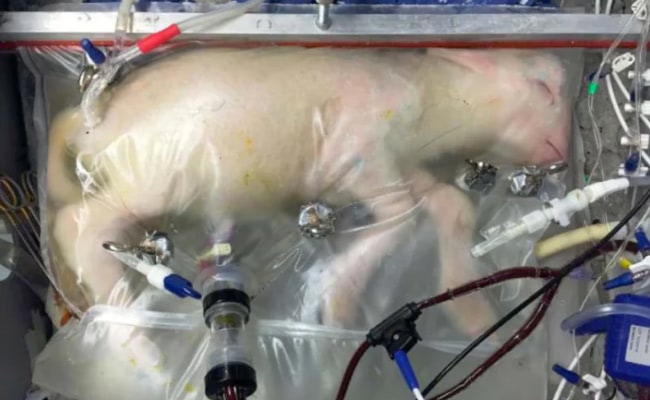A very recent success brought the research in artificial wombs one step forward. A lamb born at the equivalent of 23 weeks in a human gestational period was kept alive in an artificial womb and developed just as if it was in a normal womb.
The artificial womb, or "biobag" in this case, imitates the environment of a womb: dark, sterile and with controlled temperature. The biobag is filled with synthetic amniotic fluids in which the lamb fetus submerges. The lamb's umbilical cord is connected to sources of oxygen and nutrition. With the support of circulation, the lamb develops till the premature organs are ready to take the outside world. This method has been proven to be extremely effective so far. The lamb exhibited normal development in any aspect, compared to a "normal" lamb.
 Left, a lamb born prematurely at 107 days. Right, the same lamb on day 28 of artificial support.
Left, a lamb born prematurely at 107 days. Right, the same lamb on day 28 of artificial support.
The concept behind this procedure existed already, but this is the first time the experiment is carried out successfully. The fragile heart of the preemie needs the exactly correct amount of pressure to continuing blood exchanging; oxygen needed to be pumped into premature lungs that are essentially not ready for air. Both are very intricate procedures that have to be performed onto an extremely vulnerable being. At 50/50 odds, even if the premature baby makes it out of the incubator, chronicle diseases or physical deficiencies with a lifelong impact are very likely in these cases. This biobag avoided complications by letting the lamb's heart do its own pumping, so it didn't require an external pump for blood and lung circulation. Proven to be the most successful method so far.
The next application of this technology is of course for human babies. Alan Flake, the doctor behind this experiment said: “I don’t want this to be visualized as humans hanging on the walls in bags. This is not how this device will work or look”. It is a great achievement, but at the same time it also seems the archetype of the artificial womb is a plastic bag with tubes going in and out. Maybe this isn't exactly how we picture our offspring coming to life. Then it should also be taken into consideration how such a special service will look like. It might be time to involve some designers in the process. How the artificial womb will be visualized could determine its position in our society. More than just look, it's also acceptance in the social environment.
This article is part of the Artificial Womb research project by NNN. The goal of this project is to develop thought-provoking scenarios that facilitate a much-needed discussion about the way technology radically alters our attitude towards reproduction, gender, relationships and love in the 21st century. We highly value your feedback or input, contributions can be sent to womb@nextnature.net.
Image: The Guardian

Share your thoughts and join the technology debate!
Be the first to comment